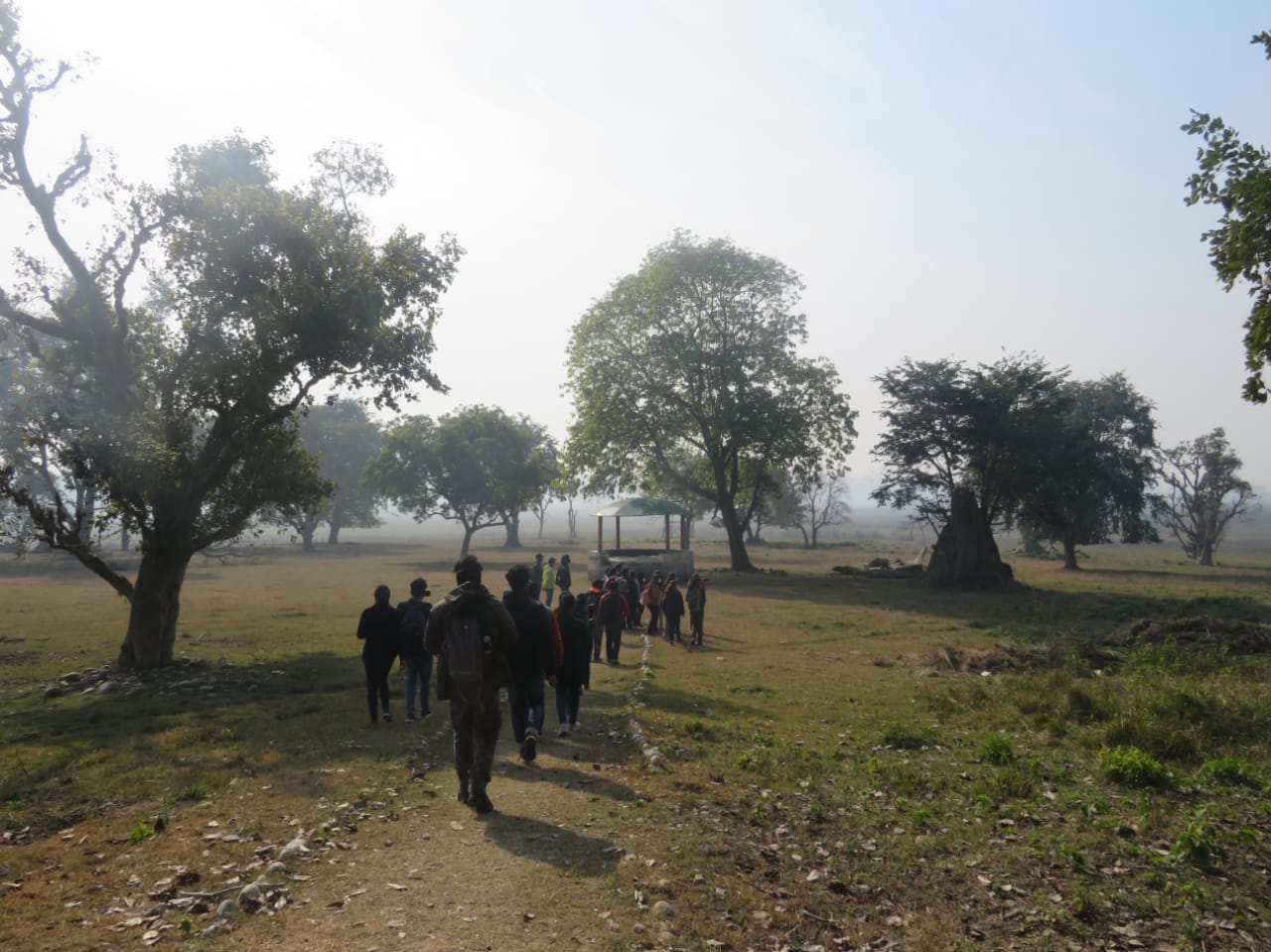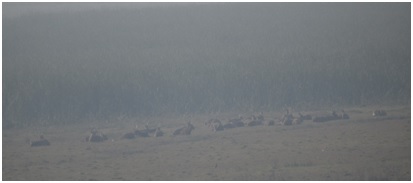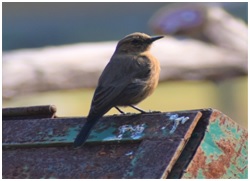Trip to Jhilmil Conservation Reserve and Chilla dam

On 26th December 2020, M.Sc. Forestry third semester students were taken on a trip to Jhilmil Conservation Reserve in Haridwar and Chilla dam in Rishikesh. Jhilmil Conservation Reserve is a picturesque wetland which is home to the Terai wetland Barasingha, Rucervus duvaucelli. Initially a reserve forest, Jhilmil was elevated to the status of conservation reserve in 2005 post the sighting of these Swamp deer in the region. Other kinds of Swamp deer found elsewhere in India are the Hardbrown barasingha , Rucervus duvaucelli branderi found at Kanha Tiger reserve in Madhya Pradesh, and the North-Eastern Rucervus duvaucelli ranjitsinhii (IUCN status: Vulnerable).
The three subspecies differ in cranial and dental features, and also in the field. The Wetland Barasingha is the largest (5 cm taller and slightly heavier in the stag) and its hind much taller, and with a thicker neck and build than the eastern race. Its tail is longer with a whitish fringe to it. The Hard-ground Barasingha is slightly smaller than the wetland one, but has longer antlers, darker pelage and a more prominent neck ruff. Its hooves are not splayed like the wetland and eastern races. The Eastern Barasingha is the smallest, with the smallest antlers and tail. The antlers show distinct branching lower down the beam, and are flatter and more palmate than others. The face is slender; the ears are smaller and pointed, instead of rounded and have little white hair in them. Large white or cream hair on the insides of ears is the easiest way to distinguish hard-ground and wetland does from Sambar.
Popularly known as Chital, Spotted deer is India’s most common, most visible and arguably most beautiful deer. It is also the only predominantly spotted deer in the country, with spots present in both sexes, in all seasons and through life. The reddish brown coat varies geographically, becoming redder in southern India while the deer of northern Terai and central India are the largest in size and antlers. Older males are darker and the fawns are lighter. Its white throat patch and undersides are complemented by a dark dorsal stripe, and in the case of old males, with a dark muzzle band and a dark pattern on the face. During the rut, the male necks become darker and more swollen. There is no neck ruff and the facial glands are less developed. Male antlers are lyre-shaped with three tines: a long brow tine (set at right angles to the beam) and two branch tines (inwardly oriented trez tine). Older males may have one or more false points where the brow joins the beam. The sexes are almost identical except for size (males are about 50 per cent heavier than females) and the presence of antlers in the male. The antlers are largest proportional to body size and the body is longer proportional to height among all other deer in the world. 89 The tail is relatively long, and the ears are medium-sized and narrow compared with the Sambar. This, and the general dappled colouration, may be adaptations to its diurnal and forest-edge existence unlike the nocturnal forest habitat of the Sambar (Indian mammals by V K Menon).
Students saw spotted deer and swamp deer in groups from watch tower. Swamp deer forms separate uni-sex, multi-member groups except during the rut when there are multi-male, multi-femalegroups that aggregate up to 250 individuals. Swamp deer is large sized, with spectacular 5-6 tined antler in males. It is reddish-brown in winter and greyish brown in summer with whitish underparts. They also saw shed antlers and footprints of spotted deer beside the river. Besides these, a number of birds were observed which gave a hint to the students the diversity of biota that a wetland supports. A cemented waterhole was also constructed there and a couple of spotted deer were also seen nearby the waterhole.
Next students visited the chilla dam at Rishikesh. At first students were appalled by the clear blue coloured Ganga river flowing in a canal by the road with colourful graffiti carved on the walls encapsulating the river. But soon they realised the dark side of the project which is habitat fragmentation of the Pachyderms of Rajaji National Park. The window of human-animal conflict also opens with this construction. Although electricity supply is a necessary of the current times yet a middle path should be followed to maintain harmony among all living beings.

Swamp Deers

Tawny Pipit

Indian Chat

